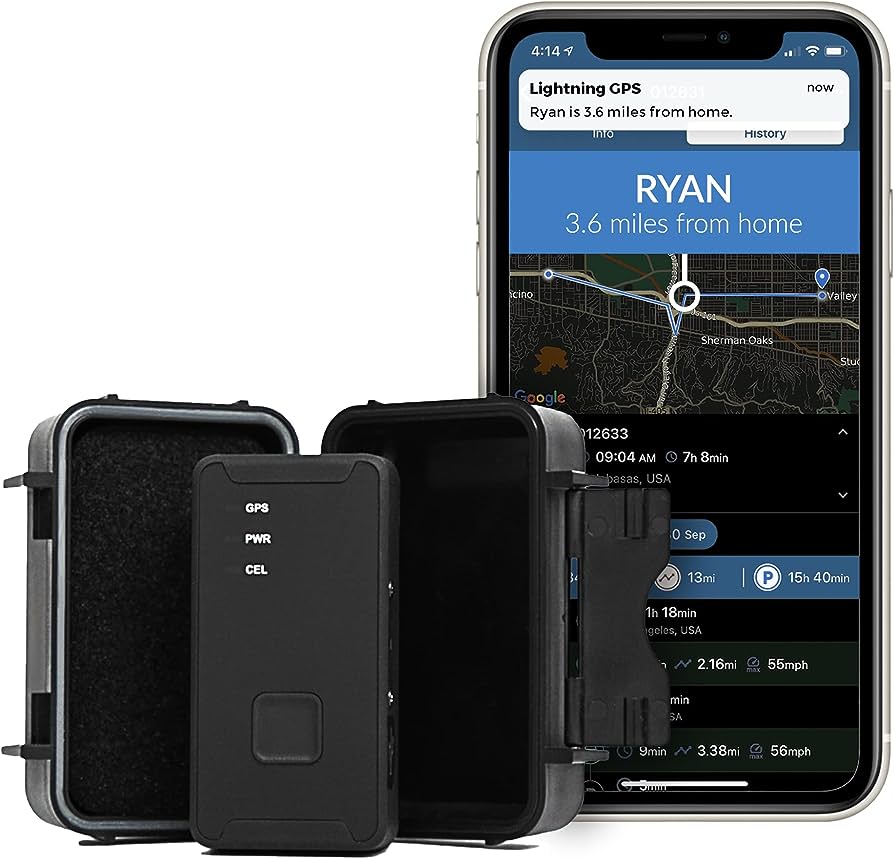To track burned calories, you can use wearable fitness trackers or mobile apps that monitor your physical activity levels and heart rate. These devices provide accurate data on the calories you burn during exercise and throughout the day, helping you to stay on top of your fitness goals.
Understanding Basal Metabolic Rate (Bmr)
Understanding Basal Metabolic Rate (BMR) is crucial to accurately track burned calories. By knowing your BMR, you can determine how many calories your body burns at rest and make informed decisions about calorie intake and exercise for weight management.
When it comes to tracking burned calories, it is essential to understand your Basal Metabolic Rate (BMR). BMR refers to the number of calories your body needs to maintain its basic functions while at rest. It accounts for approximately 60-75% of your total calorie expenditure.
By comprehending how BMR works, you can effectively monitor and manage your calorie intake for weight loss or maintenance.
Factors Influencing Bmr:
To grasp the concept of BMR, it’s crucial to be aware of the factors that can influence it. These include:
- Age: As we age, our BMR tends to decrease due to a decline in muscle mass and a slower metabolic rate.
- Gender: On average, men tend to have a higher BMR than women. This difference is primarily due to differences in body composition and hormonal variations.
- Muscle mass: Muscle is more metabolically active than fat, so individuals with higher muscle mass tend to have a higher BMR.
The Impact Of Genetics On Bmr:
While genetics do play a role in determining our overall metabolism, it is important to note that lifestyle factors such as diet and exercise can still have a significant impact on our BMR. While we may be genetically predisposed to a certain metabolic rate, lifestyle choices can either enhance or hinder it.
Calculation Of Bmr:
To calculate your BMR, you can use various formulas such as the Harris-Benedict equation or the Mifflin-St Jeor equation. These formulas take into account your weight, height, age, and gender to estimate your BMR accurately. It is worth noting that these formulas provide an estimate and may not be entirely precise for everyone.
Significance Of Bmr In Tracking Burned Calories:
Understanding your BMR is crucial when it comes to tracking burned calories. By knowing your BMR, you can determine how many calories you need to consume to maintain your weight or create a calorie deficit for weight loss. Additionally, tracking your BMR alongside your daily activity level and exercise can provide valuable insights into your overall calorie expenditure.
By monitoring your BMR, you can make informed decisions about your diet and exercise routine, ensuring that you are properly fueling your body for your desired health and fitness goals. Remember that while BMR is an essential factor, it is just one piece of the puzzle when it comes to tracking burned calories and managing your overall weight.
Determining Resting Metabolic Rate (Rmr)
Determining Resting Metabolic Rate (RMR) is crucial for tracking burned calories accurately. By measuring the energy expended at rest, you can better understand your daily calorie needs and plan your fitness journey effectively.
Relationship Between Bmr And Rmr
- Basal metabolic rate (BMR) is the number of calories your body needs to perform basic functions at rest.
- Resting metabolic rate (RMR) is a similar concept, but it takes into account a few more factors such as digestion and other low-intensity activities.
- BMR and RMR are often used interchangeably because the difference between the two is minimal.
- RMR is generally estimated to be about 10% higher than BMR.
Estimating Rmr Through Equations
- Several equations can help estimate your RMR accurately.
- The most common one is the Harris-Benedict equation, which takes into account your gender, weight, height, and age.
- Another widely used equation is the Mifflin St. Jeor equation, which provides similar results.
- These equations provide a general estimate, but individual variations in metabolism may still exist.
- Factors such as muscle mass, genetics, and overall health can influence your RMR.
Importance Of Rmr In Calorie Tracking
- Tracking your RMR is crucial for maintaining a healthy weight and reaching your fitness goals.
- Knowing your RMR allows you to determine how many calories you need to consume or burn to achieve a calorie deficit or surplus.
- By accurately tracking your RMR, you can adjust your calorie intake to support weight loss, muscle gain, or maintenance.
- Comparing your actual calorie consumption with your estimated RMR can also help identify potential issues, such as overeating or undereating.
- Understanding your RMR enables you to effectively plan your diet and exercise routine for optimal results.
Remember, accurately estimating your RMR is essential for effective calorie tracking. Use the equations mentioned above as a starting point, but always listen to your body and make adjustments accordingly.
Utilizing Activity Trackers For Calorie Tracking
Discover the benefits of using activity trackers for tracking burned calories. Easily monitor and manage your calorie intake with these efficient tools.
Overview Of Activity Trackers:
Activity trackers are wearable devices that help individuals monitor and measure their physical activities throughout the day. These devices have become increasingly popular for tracking burned calories and promoting a healthy lifestyle. As the name suggests, activity trackers provide users with real-time data on their daily activities, including steps taken, distance covered, heart rate, and even sleep patterns.
By utilizing these trackers, individuals can gain valuable insights into their fitness levels and make informed decisions to achieve their health goals.
Types Of Activity Trackers:
There are various types of activity trackers available in the market today. Depending on the user’s preferences and requirements, they can choose from the following options:
- Fitness bands: These lightweight and sleek trackers are worn on the wrist, providing basic activity tracking features. They are ideal for users who want a simple device to monitor their steps, calories burned, and heart rate.
- Smartwatches: These versatile devices not only track your activities but also offer additional features like music playback, notifications, and even GPS tracking. Smartwatches are perfect for users who prefer a multi-functional device that integrates seamlessly with their daily routines.
- Clip-on trackers: These small devices can be clipped onto clothing or accessories, providing discreet tracking without the need for wearing something on the wrist. They are popular among individuals who prefer a minimalist option.
- GPS trackers: These trackers are ideal for outdoor enthusiasts or athletes who want precise data on their distance, speed, and route. GPS trackers use satellite technology to provide accurate information about activities like running, cycling, or hiking.
Features And Benefits:
Activity trackers offer a range of features that make them valuable tools for calorie tracking and overall fitness monitoring. Some key features and benefits include:
- Step count: Activity trackers accurately count the number of steps you take throughout the day, helping you set goals, track progress, and stay motivated.
- Calorie tracking: By analyzing your activity level, heart rate, and other factors, activity trackers estimate the number of calories burned, providing you with valuable insights for weight management.
- Heart rate monitoring: Many activity trackers come with built-in heart rate sensors that monitor your heart rate during different activities. This feature helps you gauge the intensity of your workouts and make adjustments accordingly.
- Sleep tracking: Some trackers are equipped with sleep monitoring capabilities, allowing you to analyze your sleep duration and quality. This information can help you make lifestyle changes for better sleep patterns.
- Activity reminders: Activity trackers often provide gentle reminders to move or take breaks from prolonged sitting, encouraging users to maintain an active lifestyle throughout the day.
- Goal setting and tracking: Activity trackers allow users to set personalized goals, whether it’s reaching a certain number of steps or burning a specific number of calories. Tracking progress towards these goals can help you stay motivated and accountable.
Connecting Activity Trackers With Calorie Tracking Apps:
To enhance the accuracy and functionality of activity trackers, users can connect them with dedicated calorie tracking apps. These apps provide an easy way to input diet information and track calorie intake, creating a comprehensive picture of overall energy balance.
By combining data from the activity tracker and calorie tracking app, users can gain a more holistic view of their daily calorie burn and intake, helping them make informed decisions about diet and exercise.
Accuracy And Limitations Of Activity Trackers:
While activity trackers offer valuable insights into calorie tracking, it’s important to acknowledge their limitations and the need for interpretation. Here are a few factors to consider:
- Variations in accuracy: Activity trackers may provide estimations rather than precise measurements. Factors such as device calibration, sensor quality, and individual differences can affect accuracy.
- Type of activity: Some trackers struggle to accurately measure certain activities like cycling or weightlifting, which involve different movement patterns and intensity levels.
- Individual variances: Every individual’s body responds differently to physical activity, and factors like age, body composition, and metabolism can influence calorie burn. Activity trackers may not capture these variations accurately.
- Psychological factors: Activity trackers rely on the user’s compliance and honesty in wearing and using them consistently. User behavior, motivation, and engagement with the device can impact the reliability of the tracked data.
Understanding these limitations can help users interpret the data from their activity trackers more effectively and make informed decisions based on their individual circumstances.
Incorporating activity trackers into your calorie tracking journey can provide valuable insights into your fitness levels and progress. By selecting the right tracker, leveraging its features, and connecting it with a calorie tracking app, you can empower yourself to make informed decisions and achieve your health and fitness goals.
Remember to keep in mind the accuracy and limitations of activity trackers while interpreting the data. So, start tracking your burned calories today and embark on a healthier lifestyle!
Monitoring Caloric Expenditure During Exercise
Track the calories you burn during exercise with effective methods for monitoring caloric expenditure. Stay on top of your fitness goals by utilizing various tools and techniques to accurately measure the calories burned in your workouts.
Importance Of Tracking Burned Calories During Exercise
Regular exercise is undoubtedly important for our overall health and fitness. However, if you are aiming to lose weight or maintain a healthy weight, it becomes crucial to track the number of calories you burn during your workouts. Tracking burned calories allows you to get a clear picture of your energy expenditure and make informed decisions about your diet and exercise routine.
Different Types Of Exercises And Their Impact On Calorie Burn
Not all exercises are created equal when it comes to burning calories. Various types of exercises have different impacts on your caloric expenditure. Let’s explore some popular exercise categories and how they contribute to burning calories:
Aerobic Exercises:
- Running: A vigorous activity that can burn around 600-800 calories per hour.
- Cycling: A great option for low-impact cardio that can help you burn around 400-600 calories per hour.
- Swimming: An excellent full-body workout that can burn approximately 500-700 calories per hour.
- Jumping rope: A fun and intense exercise that burns about 700-900 calories per hour.
Strength Training:
- Weightlifting: While strength training focuses more on building muscle, it also helps burn calories. It can lead to an additional calorie burn of 100-200 calories per hour.
High-Intensity Interval Training (Hiit):
- HIIT involves short bursts of intense exercise, followed by short periods of rest. It is known for its calorie-torching effects. A 30-minute HIIT workout can burn up to 400-600 calories.
Strategies For Tracking Burned Calories During Exercise
Now that we understand the importance of tracking burned calories and the impact of different exercises on calorie burn, let’s explore some strategies to effectively track your caloric expenditure during exercise:
- Use fitness trackers or smartwatches: Wearable devices equipped with heart rate monitors and activity trackers can provide you with accurate estimates of calorie burn during workouts.
- Exercise apps: Many smartphone applications allow you to input the type of exercise, duration, and intensity to estimate your calorie burn.
- Online calculators: Several websites offer calorie burn calculators, taking into account various factors such as weight, height, age, and exercise intensity.
- Keep a workout journal: By recording your exercise routine and duration, you can estimate the number of calories burned using resources like a fitness diary or online databases.
Tracking burned calories during exercise not only helps you stay accountable but also provides valuable insights into the efficiency of your workouts and weight management goals. So, start monitoring your caloric expenditure today and make the most out of your fitness journey.
Incorporating Non-Exercise Activity Thermogenesis (Neat)
Discover the benefits of incorporating Non-Exercise Activity Thermogenesis (NEAT) to track burned calories. Learn how to increase daily activity levels and burn more calories throughout the day with simple lifestyle changes.
Understanding Neat And Its Impact On Calorie Burn
NEAT, or Non-Exercise Activity Thermogenesis, is the energy expenditure that occurs when you engage in daily activities other than purposeful exercise. It encompasses all the calories you burn while walking, standing, fidgeting, and even typing. While NEAT may not seem significant on its own, it can have a profound impact on your overall calorie burn and weight management.
Understanding NEAT and its effects can help you optimize your daily routine for better health and fitness.
- NEAT refers to the energy expended through non-exercise activities.
- It includes various activities like walking, standing, and fidgeting.
- NEAT significantly contributes to total daily calorie expenditure.
- Small changes in NEAT can lead to significant calorie burn over time.
- Increasing NEAT can support weight management and overall health.
Incorporating Neat Into Your Daily Routine
Incorporating NEAT into your daily routine doesn’t require any additional gym time or vigorous exercise. Instead, it encourages you to be more active throughout the day by making simple changes to your habits and environment. By consciously incorporating NEAT activities, you can increase your calorie burn and improve overall health.
- Make it a habit to take brief walking breaks throughout the day.
- Opt for stairs instead of elevators or escalators whenever possible.
- Stand up and stretch regularly if you have a desk job.
- Try to include household chores and gardening in your routine.
- Periodically pace or fidget while sitting for extended durations.
Examples Of Neat Activities
NEAT activities encompass a wide range of daily tasks and movements that can easily be incorporated into your routine. By diversifying your activities and finding ways to stay active throughout the day, you can maximize NEAT and enhance your calorie burning potential.
Here are some examples of NEAT activities:
- Walking or cycling to work instead of driving.
- Taking the stairs instead of using an elevator.
- Doing household chores like vacuuming and mopping.
- Gardening or tending to your backyard.
- Dancing or playing with your kids or pets.
- Standing and moving during phone calls or virtual meetings.
Benefits And Tips For Increasing Neat
Increasing your NEAT comes with numerous benefits beyond just burning additional calories. It can improve your overall fitness, help manage weight, and promote a healthier lifestyle. Here are a few tips to help you increase NEAT and reap its benefits:
- Aim to accumulate at least 10,000 steps per day.
- Use a fitness tracker to monitor your daily activity levels.
- Break up extended periods of sitting with short movement breaks.
- Incorporate NEAT activities you enjoy to sustain motivation.
- Get creative with your daily tasks and find ways to make them more active.
- Engage in hobbies that involve physical movement, such as dancing or gardening.
- Avoid sedentary behavior and constantly look for opportunities to add more activity into your day.
By incorporating NEAT into your daily routine, you can make significant progress in burning calories and improving your overall health. Remember, small changes can add up to significant results over time. Keep moving, stay active, and make the most of every opportunity to increase your NEAT.
Your body will thank you for it!
Understanding The Role Of Heart Rate In Calorie Tracking
Discover how understanding your heart rate can help you accurately track the calories you burn during physical activity. Learn effective methods for tracking burned calories and achieve your fitness goals faster.
Relationship Between Heart Rate And Calorie Burn
- The heart rate plays a vital role in the process of calorie tracking. It is directly correlated to the number of calories burned during exercise.
- When you exercise, your heart rate increases to supply oxygen and nutrients to your muscles, resulting in a higher calorie burn.
- Understanding the relationship between heart rate and calorie burn can help you optimize your workouts for maximum effectiveness.
Tracking Heart Rate During Exercise
- Monitoring your heart rate during exercise is essential for accurate calorie tracking. By tracking your heart rate, you can determine the intensity of your workout and estimate the number of calories burned.
- There are various methods to measure your heart rate during exercise:
- Manual pulse check: Place two fingers on your wrist or neck and count the number of beats in 15 seconds. Multiply that by four to get your heart rate per minute.
- Wearable heart rate monitors: Fitness trackers, smartwatches, and chest straps equipped with heart rate sensors provide real-time heart rate data during your workout.
- Cardio machines: Many modern treadmills, ellipticals, and stationary bikes have built-in heart rate sensors, making it convenient to track your heart rate while exercising.
Utilizing Heart Rate Monitors For Accurate Calorie Tracking
- Heart rate monitors are valuable tools for accurate calorie tracking during workouts. They provide real-time data, allowing you to monitor and adjust your exercise intensity accordingly.
- Here are some benefits of utilizing heart rate monitors:
- Precise calorie tracking: Heart rate monitors measure your heart rate continuously throughout your workout, providing more accurate calorie burn estimates compared to estimations based solely on exercise type or duration.
- Optimization of exercise intensity: By monitoring your heart rate, you can ensure you are exercising within your target heart rate zone. This helps optimize calorie burn and avoid both overexertion and underexertion.
- Personalized workout plans: Heart rate monitors can help fitness professionals develop personalized workout plans based on an individual’s target heart rate for different fitness goals, such as weight loss or cardiovascular endurance.
- Motivation and feedback: Seeing your heart rate values on a monitor can provide motivation and feedback on your exercise progress, encouraging you to push harder or maintain a steady pace.
Remember, understanding the relationship between heart rate and calorie burn, along with tracking your heart rate during exercise using heart rate monitors, will result in more accurate calorie tracking and help you achieve your fitness goals effectively.
Adjusting Caloric Intake Based On Burned Calories
Adjusting your caloric intake based on burned calories is essential for effective weight management. Tracking your burned calories enables you to make more informed decisions about your daily food consumption, promoting a healthy and balanced diet.
Adjusting your daily caloric intake based on the number of calories you burn is an important aspect of achieving your weight loss goals. By understanding the relationship between calorie deficit, burned calorie data, and macronutrient ratios, you can ensure that your diet aligns with your fitness objectives.
In this section, we will explore the importance of calorie deficit for weight loss, how to use burned calorie data to adjust your daily calorie intake, and the significance of considering macronutrient ratios for optimal results.
Importance Of Calorie Deficit For Weight Loss
To lose weight, it is crucial to create a calorie deficit, which means consuming fewer calories than you burn. Maintaining a calorie deficit signals your body to tap into its fat stores for energy, leading to weight loss over time.
Here are some key points to consider:
- Set a realistic calorie deficit: Aim for a moderate deficit of around 500-1000 calories per day, as drastic cuts can have negative impacts on your health and metabolism.
- Gradual weight loss: Losing 1-2 pounds per week is generally considered a healthy and sustainable rate of weight loss.
- Monitor your progress: Regularly track your weight, measurements, and body composition changes to ensure you are on the right track.
Using Burned Calorie Data To Adjust Daily Calorie Intake
Knowing how many calories you burn through physical activity can help you determine the appropriate amount of calories to consume each day. Here’s how you can use this valuable information:
- Track your burned calorie data: Utilize fitness trackers, apps, or journals to record the calories you burn during exercise and daily activities.
- Calculate your total daily energy expenditure (TDEE): Combine your basal metabolic rate (BMR) with the calories you burn through physical activity to determine your TDEE.
- Adjust your calorie intake: To create a calorie deficit, subtract a safe and realistic amount of calories from your TDEE. Aim to consume this adjusted calorie intake on a daily basis.
Considering Macronutrient Ratios For Optimal Results
While tracking calories is essential, it’s also important to consider the quality and composition of the calories you consume. Balancing your macronutrient ratios can help optimize your fat loss and muscle retention efforts. Here’s what you need to know:
- Protein: Ensure you consume enough protein to support muscle growth and repair. Aim for around 0.8-1 gram of protein per pound of body weight.
- Carbohydrates: Incorporate complex carbohydrates to fuel your workouts and provide sustained energy throughout the day.
- Fats: Include healthy fats, such as avocados, nuts, and olive oil, in your diet. These fats contribute to satiety and support essential bodily functions.
By adjusting your caloric intake based on burned calories and considering macronutrient ratios, you can fine-tune your weight loss journey and achieve optimal results. Remember to consult with a healthcare professional or nutritionist for personalized guidance tailored to your specific needs.
Keep making progress towards a healthier and fitter you!

Credit: www.nbcnews.com
Limitations And Considerations In Calorie Tracking
When tracking burned calories, it is important to consider limitations such as the accuracy of calorie tracking devices and the individual variability in metabolism. Additionally, factors like body composition and exercise intensity can impact calorie burn. It is crucial to approach calorie tracking with caution and not solely rely on it for weight management goals.
Tracking burned calories can be a useful tool for individuals looking to manage their weight or improve their physical fitness. However, it’s important to understand that there are limitations and considerations to keep in mind when utilizing calorie tracking methods.
Here, we discuss two key factors to be aware of: the inaccuracy of calorie tracking methods and individual variations in calorie burn.
Inaccuracy Of Calorie Tracking Methods:
- Calorie tracking apps and devices may provide estimations rather than precise measurements, as their accuracy depends on various factors.
- Food databases used for calorie estimations may not always have accurate information for every food item, leading to inaccuracies in calorie tracking.
- Calculations are based on general formulas that do not incorporate specific individual factors, such as metabolism rate and body composition.
- Calorie burn estimations from exercise machines or wearables can be influenced by factors like heart rate, body position, and the accuracy of the device itself.
Individual Variations In Calorie Burn:
- Each person’s metabolism works uniquely, resulting in variations in how efficiently they burn calories.
- Factors like age, gender, genetics, and body composition can significantly impact the number of calories burned during physical activities.
- Intensity, duration, and type of exercise also affect calorie burn, as some activities may have a higher impact on certain muscle groups or utilize more energy.
Identifying And Addressing Limitations For Accurate Tracking:
- Use calorie tracking methods as a general guideline rather than a precise measurement, keeping in mind potential inaccuracies.
- Consider factors like age, gender, and body composition when interpreting calorie tracking data, understanding that it may not directly apply to everyone.
- Combine calorie tracking with other metrics, such as body measurements or overall energy levels, for a more comprehensive approach to health and fitness tracking.
- Consult with a healthcare professional or registered dietitian for personalized guidance on calorie tracking, taking into account individual needs and goals.
By understanding the limitations and considerations associated with calorie tracking, individuals can make more informed decisions when it comes to managing their weight and overall well-being. Remember, it’s crucial to approach calorie tracking as part of a balanced and holistic approach to health, considering various factors that contribute to overall fitness and wellness.
Frequently Asked Questions Of How To Track Burned Calories
How Do You Calculate The Total Calories Burned?
To calculate total calories burned, use the formula: calories burned per minute x total minutes of activity.
Is Apple Watch Calories Burned Accurate?
The Apple Watch provides an accurate measure of calories burned.
Which App Is Accurate For Calories Burned?
An accurate app for tracking calories burned is recommended.
Are Watches Accurate For Calories Burned?
Watches can provide accurate estimates of calories burned during physical activity.
Conclusion
Tracking burned calories is essential for anyone trying to achieve their health and fitness goals. By understanding the calories you burn during various activities, you can make informed decisions about your diet and exercise routine. Whether you use a fitness tracker, a smartphone app, or a simple pen and paper, there are many ways to track your burned calories.
Set realistic goals, stay consistent, and be mindful of your calorie intake to maximize your success. Remember, every person is unique, so finding the tracking method that works best for you is important. Stay motivated and celebrate your progress along the way.
By consistently tracking your burned calories, you will gain a better understanding of your body’s needs and be able to make adjustments to reach your desired level of health and fitness. Start tracking today and watch as your efforts yield amazing results!
- What Is the 11 Hour Limit: A Comprehensive Guide - June 7, 2024
- What Happens if You Drive on a Suspended License in Virginia - June 7, 2024
- Wilcox Justice Court Overview: Online Services & Legal Proceedings - June 6, 2024




